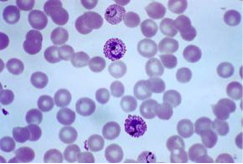The 4 kingdoms

Figure 31: phylogenetic tree
The 4 kingdoms are Protista, Fungi, Plantae, and Animalia.
Protists:
1. Most are microscopic.
2. Most are single celled.
3. Some can perform photosynthesis, making them autotrophs.
4. Some are heterotrophs.
5. They can produce asexually (by themselves) or sexually (exchanging genetic material with partners).
6. Some of them can move by means of cilia or flagella.
7. Similar to Fungi in modes of reproduction.
Fungi:
1. Most are multicellular, but yeast are a unicellular exception.
2. Most are heterotrophs.
3. Their cells have cell walls made of chitin.
4. They can reproduce sexually or asexually through spores.
5. They are similar to Protists because they can reproduce sexually or asexually, and they are both sometimes autotrophs and sometimes heterotrophs.
Plants:
1. They are multicellular.
2. They are autotrophs.
3. Plant cells have cell walls made of cellulose.
4. Plant cells have chloroplasts that perform photosynthesis.
Similar to Fungi in that most are multicellular and have cell walls. However, plants’ cell walls are made up of cellulose as opposed to chitin. Very different from Protists because plants are multicellular, as opposed to protists which are mostly multicellular. They can reproduce both sexually and asexually.
Animals:
1. They are multicellular.
2. They are heterotrophs.
3. They do not have cell walls.
Animals are most similar to plants because they are multicellular. However, Animals do not have cell walls like plants or fungus. Animals are the only Kingdom that does not reproduce asexually and are never autotrophs. [23]
Quiz on 4 kingdoms- Natan and Noah
Unity and diversity in the kingdoms
Unity: Plasmodium vivax and Trypanosoma brucei

Figure 16: Plasmodium Vivax

Figure 17: Trypanosoma brucei
These two organisms are an example of unity because they are from the same kingdom. They are both microscopic. They both are parasites that cause common diseases in humans. Both of them are motile.
Disunity: Rhizopus stolonifer and Apis melifera (Western honey bee)

Figure 20: Rhizopus stolonifer

Figure 21: Western Honey Bee (Apis mellifera)
These two are very different making them diverse. Rhizopus stolonifer is part of kingdom fungi while the Western Honey Bee is a part of kingdom Animalia. The Western Honey Bee has a nervous system while the fungus does not. The Rhizopus stolonifer is non motile while the bee is motile. The fungi can reproduce asexually while the Western Honey Bee reproduces sexually.